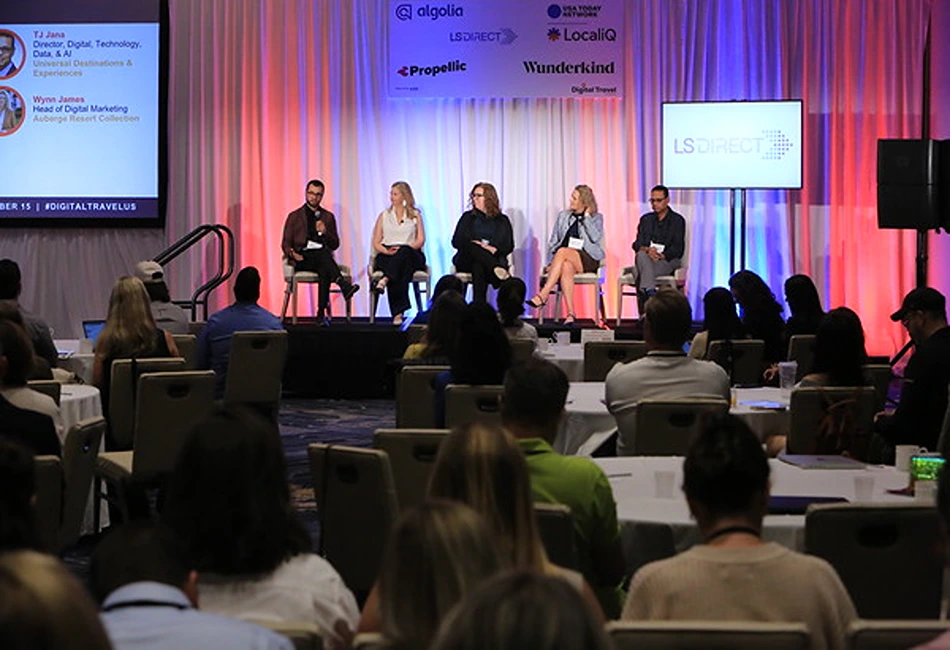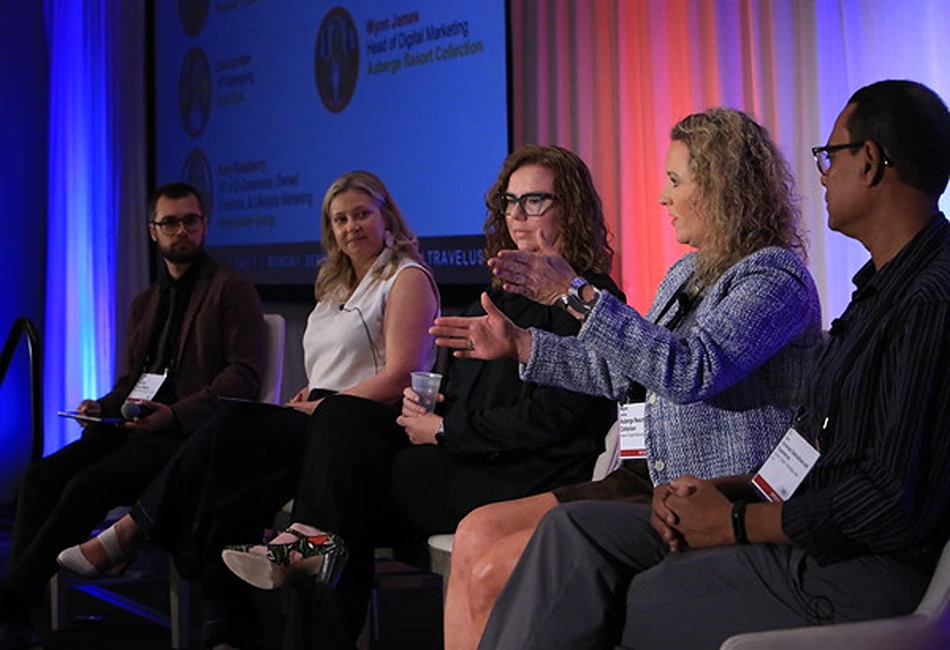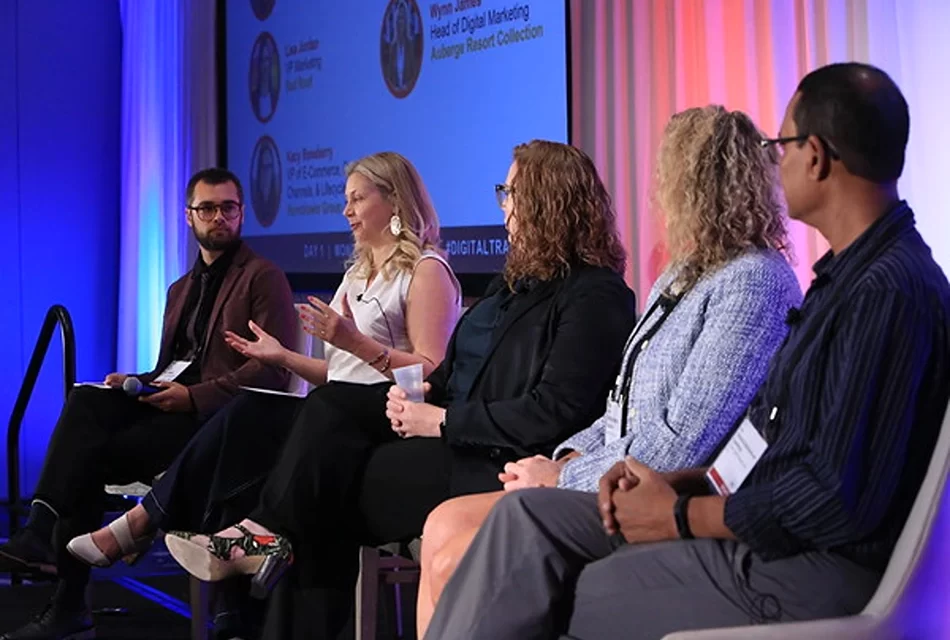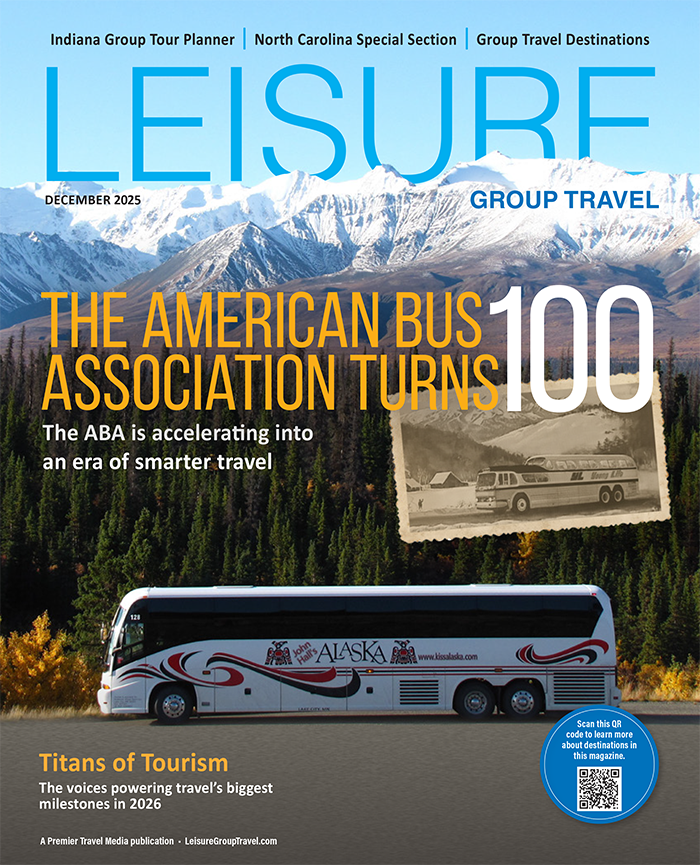Orlando’s Digital Travel Summit made it clear: AI-driven search, GEO, and agents are reshaping discovery and bookings. What changed, what it means, and how to adapt.
By Tyler Drag
Orlando staged a clear message in 2025: AI now drives the travel conversation. Panels, hallway talk and vendor demos centered on how AI is rapidly evolving, how content is produced and discovered and how teams should restructure. “Generative Engine Optimization” (GEO) moved from fringe idea to operating priority. Impressions are climbing on many sites while clicks stay flat or dip. The surface where decisions happen, or at the very least consumer research, has started to shift to AI results and agents.

GEO is a Thing Now
GEO is the practice of shaping your brand’s facts, structure and footprint so large, language models and AI overviews surface you correctly. It goes beyond polishing a web page. It includes off-site signals and machine-readable truth:
- Tight, consistent facts everywhere your brand appears
- Structured data and FAQs that answer how, where, price, hours and policies
- Clean entity profiles on Wikipedia, Wikidata and major directories
- Media assets with descriptive, rights-clear captions and alt text
Case Note: Red Roof’s GEO play
On our panel, Lisa Jordan (Red Roof) outlined how the team audits not just pages but the entire digital footprint. If a Wikipedia line is outdated, they fix it. If a directory field is wrong, they correct it. The goal is to ensure LLMs ingest the right facts so brand mentions in AI answers reflect current reality. The tactic is simple. The effect is compounding.
Three Trends that Defined the Conference
- AI-driven search – Users are getting synthesized answers first, links second. Expect fewer broad queries reaching your site and more bottom-funnel traffic from specific tasks.
- What to do: ship authoritative answers, mark them up and earn citations by being the clearest source.
- Multimodal social content – Short video, carousels, live, and captions now work as one system. The same story packages into video + stills + transcript + hook.
- What to do: build repeatable “content kits” per topic so teams publish fast across formats without reinventing.
- Agentic traffic – Agents can plan, compare, and execute steps on behalf of users. This is early, but changes in conversion paths are already being noticed.
- What to do: expose clean product data, prices, availability, and booking flows that agents can easily sift through. Reduce steps and ambiguity.
TripAdvisor x Perplexity: Why it matters
On stage, Victor Davidson (Tripadvisor) described a new partnership with Perplexity. Perplexity is/has rolled out an agent feature that can perform defined tasks. The takeaway for planners: itinerary building and discovery will happen upstream from traditional SERPs, and your brand data needs to be ready where those agents look. If Perplexity agents read Tripadvisor content, they will favor structured, unambiguous entries with clear location, amenities, and recency.
Search behavior is shifting fast
Last year, an attendee asked when a traveler could enter card details, PTO dates, and a budget and have an AI handle the rest. Months later, agent platforms arrived. Expect more delegated tasks: hold a room, compare two routes, build a two-city plan within a set budget. The way users search on the internet is fundamentally changing and user search related to the travel industry is not exempt.
For a deeper dive on evolving discovery paths, see “How User Search Is Changing the Travel Industry”

The Hard Parts in 2025
- Governance
Responsibility is divided. Marketing controls facts, legal controls risk, IT controls access, and vendors control the AI models themselves. Government policies are slow to get created and products are quickly evolving. Model updates alter answers without notice, while citations can be spotty depending on the LLM used. Add real constraints: privacy laws, data residency, vendor service level agreements, and unclear rights around training data. The issue is process gaps, not bad actors. The bigger risk is slow, unnoticed inaccuracies—not a headline-grabbing breach.
- Talent
People are not “AI-ready” by default. They need time on the clock to practice, test, and fail safely. New skills emerge only with reps: schema, retrieval, evaluation, prompt design, and debugging bad outputs. That requires sandboxes, office hours, paired work, and goals that reward maintenance as much as launches. Tools change monthly. Training must be recurring, not a single workshop.
- Customer experience
Users now ask LLMs to plan trips, compare options, and summarize reviews. Many are new to the tools. They over-trust clean prose, miss stale policies, and don’t verify sources. Hallucinations read like truth. Good CX assumes misuse: show sources and timestamps, surface policy deltas, highlight uncertainty, and provide one-click handoffs to book, chat, or a human. Design for verification first, convenience second.
Some Tasks to Improve Your GEO
- Inventory your public facts. Fix inconsistencies across sites, feeds, maps, Wikipedia, and directories.
- Add or improve schema for products, places, events, reviews, and policies.
- Package core topics into content kits: short video, stills, transcripts, FAQs, and a source-of-truth page.
- Run small agent tests on common tasks: price checks, amenity comparisons, simple itineraries.
Data accuracy is the new brand safety. Teams shared multiple stories where bad data led to bad AI answers. Fix the inputs and the outputs improve.
For a deeper dive on evolving discovery paths, see “How User Search Is Changing the Travel Industry”







